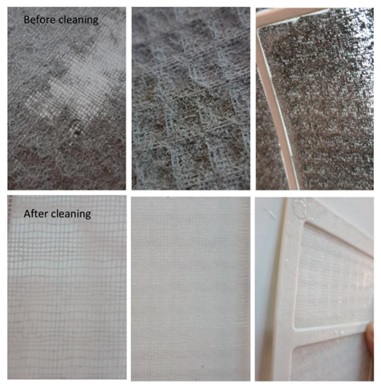A Review of the Bioaerosols in the Air-Conditioners Building
DOI:
https://doi.org/10.54741/asejar.2.4.2Keywords:
a.c. building, bioaerosol, filter, indoor building, sbsAbstract
Bioaerosol is one of the sources that influence poor indoor air quality. Most buildings have air-conditioners (A.C.) to cool down the indoor building. However, the microorganism tends to grow, especially on the air conditioner filter, which may cause health problems called sick building syndrome and other bacterial diseases. Besides, temperature variation, relative humidity, and human occupancy in the A.C. building can also influence bioaerosol growth. Staphylococcus and Micrococcus were the most dominant genera detected in the A.C. building worldwide. Therefore, A.C. buildings need periodic services to avoid the spread of bioaerosol growth as it leads to adverse indoor air quality and to maintain human health.
Downloads
References
Al-abdalall, A. H., Al-dakheel, S. A., & Al-Abkari, H. A. (2019). Impact of air-conditioning filters on microbial growth and indoor air pollution. Low-Temperature Technologies; Morosuk, T., Sultan, M., Eds, 179-206.
Asim, N., Badiei, M., Mohammad, M., Razali, H., Rajabi, A., Chin Haw, L., & Jameelah Ghazali, M. (2022). Sustainability of building heating, ventilation and air-conditioning (HVAC) systems—An overview. International Journal of Environmental Research and Public Health, 19(2), 1016.
Bonetta, S. A., Bonetta, S. I., Mosso, S., Sampò, S., & Carraro, E. (2010). Assessment of microbiological indoor air quality in an Italian office building equipped with an HVAC system. Environmental Monitoring and Assessment, 161, 473-483.
Brągoszewska, E., Biedroń, I., Kozielska, B., & Pastuszka, J. S. (2018). Microbiological indoor air quality in an office building in Gliwice, Poland: analysis of the case study. Air Quality, Atmosphere & Health, 11, 729-740.
Engvall, K., Wickman, P., and Norack, D. (2005) Sisk building syndrome and perceived indoor environment in relation to energy saving by reduced ventilation flow during heating season: a 1-year intervention study in dwellings. Indoor Air, 15, 120-126.
Goh, I., Obbard, J. P., Viswanathan, S., & Huang, Y. (2000). Airborne bacteria and fungal spores in the indoor environment. A case study in Singapore. Acta Biotechnologica, 20(1), 67-73.
Kumar, P., Kausar, M. A., Singh, A. B., & Singh, R. (2021). Biological contaminants in the indoor air environment and their impacts on human health. Air Quality, Atmosphere & Health, 14(11), 1723-1736.
Mouli, P., Mohan, S. & Reddy, S. (2005). Assessment of microbial (bacteria) concentrations of ambient air at semi-arid urban region: Influence of meteorological factors. Applied Ecology and Environmental Research, 3(2), 139-149.
Passi, A., Nagendra, S. S., & Maiya, M. P. (2021). Characteristics of indoor air quality in underground metro stations: A critical review. Building and Environment, 198, 107907.
Rasli, N. B. I., Ramli, N. A., Ahmad, M. Z., Badroldin, N. A. M., & Ismail, M. R. (2021). Assessment of Indoor Air Quality in an Air-Conditioning Split Units (Acsu) Office Building. Journal of Sustainability Science and Management, 16(4), 266-284.
Rasli, N. B. I., Ramli, N. A., Ismail, M. R., & Shith, S. (2019). Dependency of biological contaminants on temperature and relative humidity within praying halls of mosques. Sains Malaysiana, 48(8), 1575-1581.
Sibanda, T., Selvarajan, R., Ogola, H. J., Obieze, C. C., & Tekere, M. (2021). Distribution and comparison of bacterial communities in HVAC systems of two university buildings: Implications for indoor air quality and public health. Environmental Monitoring and Assessment, 193(1), 47.
Watanabe, K., Yanagi, U., Shiraishi, Y., Harada, K., Ogino, F., & Asano, K. (2022). Bacterial communities in various parts of air-conditioning units in 17 Japanese houses. Microorganisms, 10(11), 2246.
Zock, J.P., Jarvis, D., Luczynska, C., Sunyer, J. & Burney, P. (2002). Housing characteristics reported mould exposure and asthma in the European community respiratory health survey. Journal of Allergy and Clinical Immunology, 110(2), 285-292.

Downloads
Published
How to Cite
Issue
Section
ARK
License
Copyright (c) 2023 Nur Baitul Izati Rasli, Nor Azam Ramli

This work is licensed under a Creative Commons Attribution 4.0 International License.
Research Articles in 'Applied Science and Engineering Journal for Advanced Research' are Open Access articles published under the Creative Commons CC BY License Creative Commons Attribution 4.0 International License http://creativecommons.org/licenses/by/4.0/. This license allows you to share – copy and redistribute the material in any medium or format. Adapt – remix, transform, and build upon the material for any purpose, even commercially.










